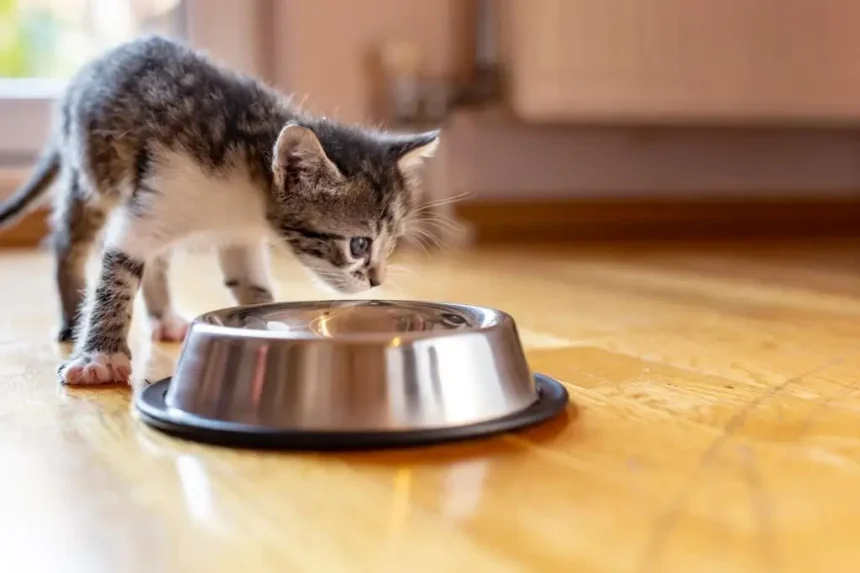Kittens are adorable little creatures that are full of energy and curiosity. However, as a new pet owner, you may have many questions regarding the care and feeding of your new feline friend. One of the most common questions asked by cat owners is whether their 6-week-old kitten can eat dry food.
In this article, we will explore the topic of feeding dry food to 6-week-old kittens. We will discuss the pros and cons of dry food, how to introduce dry food to your kitten’s diet, and the importance of feeding a balanced diet to ensure the overall health and wellbeing of your kitten.
What is Dry Food for Kittens?
Dry food is a type of cat food that is formulated to be complete and balanced, providing all of the necessary nutrients that a cat needs to thrive. Dry food is typically made up of a mixture of protein sources, such as chicken, fish, or beef, as well as grains, vegetables, and other essential vitamins and minerals.
Dry food is an excellent option for cat owners because it is convenient, cost-effective, and has a long shelf life. Additionally, many cats prefer the crunchiness of dry food, which can help to promote dental health and prevent the buildup of tartar and plaque.
Can 6-Week-Old Kittens Eat Dry Food?
Yes, 6-week-old kittens can eat dry food. However, it is important to note that kittens of this age should not be weaned from their mother or given solid food until they are at least four weeks old. Kittens rely on their mother’s milk for the first few weeks of their life, as it provides them with the necessary nutrients and antibodies to build a strong immune system.
Once a kitten is ready to be weaned, they can begin to eat solid food. While wet food is often recommended for kittens, as it provides additional moisture and can be easier for kittens to digest, dry food can also be included in their diet.
When introducing dry food to your kitten’s diet, it is important to do so gradually. Start by mixing a small amount of dry food with your kitten’s wet food, gradually increasing the amount of dry food over time. This will allow your kitten to adjust to the new food and prevent any digestive issues.
Pros and Cons of Feeding Dry Food to 6-Week-Old Kittens
Feeding dry food to 6-week-old kittens has both advantages and disadvantages. Here are some pros and cons to consider:
Pros
- Convenience: Dry food is easy to store and serve, making it a convenient option for pet owners.
- Cost-Effective: Dry food is often more cost-effective than wet food, which can be especially beneficial for pet owners on a budget.
- Dental Health: The crunchy texture of dry food can help to promote dental health by preventing the buildup of tartar and plaque.
- Longer Shelf Life: Dry food has a longer shelf life than wet food, which can be useful for pet owners who want to stock up on food.
Cons
- Lack of Moisture: Dry food contains very little moisture, which can be problematic for kittens who may not drink enough water.
- Digestive Issues: Some kittens may have trouble digesting dry food, which can lead to diarrhea or constipation.
- Nutritional Quality: The nutritional quality of dry food can vary, and not all brands provide the necessary nutrients that a kitten needs.
- Allergies: Some kittens may be allergic to certain ingredients in dry food, such as grains or certain types of protein.
Tips for Feeding Dry Food to 6-Week-Old Kittens
If you decide to feed your 6-week-old kitten dry food, there are a few tips to keep in mind to ensure their health and wellbeing.
Choose a high-quality brand
When selecting dry food for your kitten, it is important to choose a high-quality brand that is formulated specifically for kittens. Look for a brand that lists meat as the first ingredient, and avoid brands that contain fillers, such as corn or wheat.
Monitor your kitten’s water intake
Because dry food contains very little moisture, it is important to monitor your kitten’s water intake to ensure they are drinking enough. Provide fresh, clean water at all times and consider using a water fountain or adding water to their food to increase their moisture intake.
Introduce the food gradually
As mentioned earlier, it is important to introduce dry food to your kitten’s diet gradually. Start by mixing a small amount of dry food with their wet food, gradually increasing the amount of dry food over time.
Pay attention to your kitten’s behavior
Keep an eye on your kitten’s behavior after introducing dry food to their diet. If they experience any digestive issues, such as diarrhea or constipation, it may be necessary to adjust their diet or consult with a veterinarian.
Feed a balanced diet
Whether you choose to feed your kitten wet or dry food, it is important to provide them with a balanced diet that contains all of the necessary nutrients they need to grow and develop. Look for food that is labeled as complete and balanced, and avoid feeding your kitten table scraps or other human food.
Conclusion
In conclusion, 6-week-old kittens can eat dry food, but it is important to introduce it gradually and monitor their water intake and behavior. While dry food has several advantages, such as convenience and dental health benefits, it also has some potential disadvantages, such as a lack of moisture and the possibility of digestive issues.
As a pet owner, it is important to choose a high-quality brand of dry food that is specifically formulated for kittens, provide fresh water at all times, and pay attention to your kitten’s behavior and overall health. By providing your kitten with a balanced diet and the necessary nutrients, you can ensure their overall health and wellbeing as they grow and develop into adult cats.


